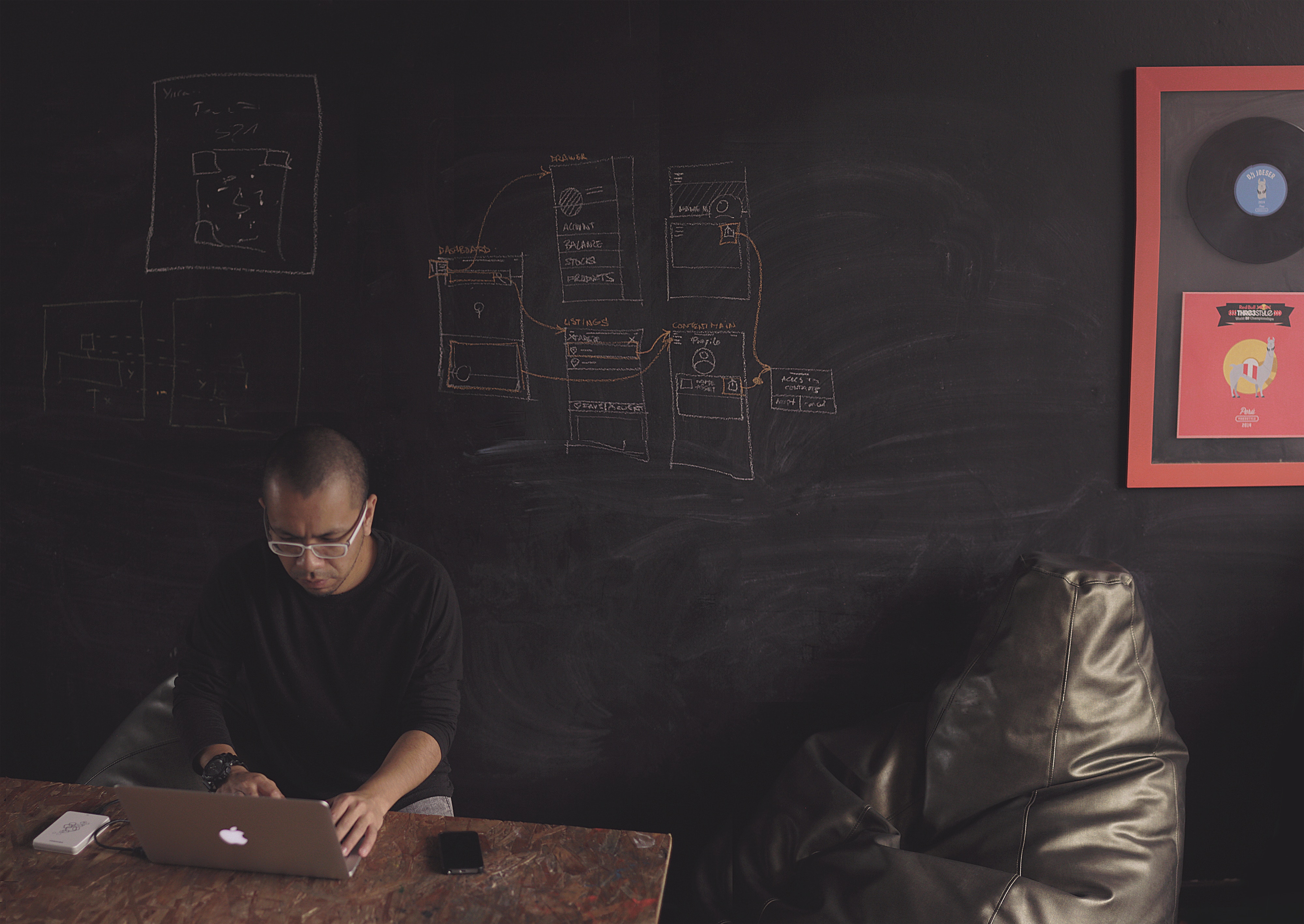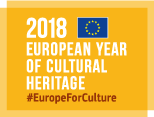
This working space is to allow an open discussion on expectancies of innovators in cultural heritage. Any member can provide suggestion.
This working space contains:
0
posts
0
videos
WORKING SPACE PRIVACY:
PUBLIC
Polls are now open again to participants of the event
This working space contains:
0
posts
0
videos
WORKING SPACE PRIVACY:
PUBLIC
Polls are now open again to participants of the event
This working space contains:
0
posts
0
videos
WORKING SPACE PRIVACY:
PUBLIC
From 11-12-2018
Find the presentations and pitches delivered during the event!
This working space contains:
0
posts
2
videos
WORKING SPACE PRIVACY:
PUBLIC

Each one can contribute this working space providing links to virtual museums and virtual tours in CH sites, facilitating the access to them
This working space contains:
2
posts
7
videos
WORKING SPACE PRIVACY:
PUBLIC
From 06-03-2019

The RURITAGE project, funded under H2020, is looking for 6 rural areas located primarily in the EU and in the EEA and 3 in the 16 ENP countries, which would like to transform themselves in in sustainable development demonstration ‘laboratories’, through the enhancement of their unique Cultural and Natural Heritage potential. To join the RURITAGE project as an additional Replicator please fill in the online application form in English and attach any additional/supplementary materials in pdf format or provide weblinks to youtube or vimeo videos you consider relevant regarding your application. The submission of the applications is paper free. The submission period for proposals will be open until midnight 31 March 2019.
This working space contains:
0
posts
0
videos
WORKING SPACE PRIVACY:
PUBLIC
From 01-01-2021
Three multicultural sites – municipalities, located 13 to 60 km from the Capital City of Vojvodina Province – Novi Sad, 2022 European Capital of Culture, will be included in Be.CULTOUR experimentation. The first one is the Municipality of Bač, close to the country border, its Western border being the River Danube (in the total length of 43 km). A canal that is an integral part of the Danube –Tisa – Danube hydrosystem is traversing Bač and 12 km from Bač, in Vajska neighborhood, there is a lake called “Provala” with a swim area and sand beach. The Municipality is intersected with waterways, making “Bačko Podunavlje” an official part of UNESCO World Network of Biosphere Reserves. It has significant cultural and tourist potential with enlisted Bač Fortress in UNESCO tentative Heritage List. Besides the Fortress, other cultural heritage sites are: Franciscan Monastery, Bodjani Monastery and Turkish Bath. In addition to cultural heritage, Bač is host to several traditional events like: Bač Kulen Fair, Bač Cooking Pot Fair, European Cultural Heritage Days and CycloBač – as the bicycle route stretching along Danube in Bač Municipality is a part of the EuroVelo 6 long-distance cycling route. The second site is the Municipality of Sremski Karlovci, which has rich cultural heritage of urbanistic, architectural, cultural and historical values (seven ortodox monasteries in the surrounding of Fruška Gora, city center, Metropolitanate of Karlovci, 18 wineries, 1st Serbian Gymnasium etc.) and immaterial heritage as well, with great tourist potential (wines, especially bermet wine, cake kuglof etc.). It includes important natural resources: 1) Danube position – as Sremski Karlovci is situated on the right bank of the Danube that provides numerous possibilities for the development of the sports and recreational facilities; 2) Marshes of Kovilj and Petrovaradin – a special nature reserve under the State protection, which is characterized by attractive landscape and significant biodiversity; and 3) National Park “Fruška Gora”. The third site is the Municipality of Irig, with National Park “Fruška Gora” which occupies the major part of its municipal territory, being one of the most attractive places in Serbia and the whole region. The greatest tourist potentials are found in spa tourism – with new “Fruške Terme” Resort and older ”Thermal” Rehabilitation Center in the village of Vrdnik. Village tourism is beginning to grow, especially in Jazak settlement (where the Jazak Ethno House is). Irig also has rich cultural heritage of urbanistic, architectural, cultural and historical values (churches, monasteries – eight in total in Irig, city center, old mine in Vrdnik, First Serbian Reading Library etc.) and immaterial heritage with great tourist potential (wines, bermet, gastronomy, countryside life fairs etc.), including mentioned important natural resources – National Park “Fruska Gora” and Vrdnik Spa, in addition with three lakes as well). Be.CULTOUR challenge: The Action Plan and human-centred innovations will focus on the development of the River Cruise enhancing its accessibility and the development of cultural itineraries that combine wine, gastronomy, religious, cultural and natural, spa and congress tourism.
This working space contains:
0
posts
0
videos
WORKING SPACE PRIVACY:
PUBLIC
From 08-02-2021
Working space dedicated to the Community of Practice of BeCULTOUR project. BeCULTOUR stands for “Beyond Cultural Tourism” and aims to develop human-centred innovations for sustainable and circular cultural tourism. Led by the italian National Research Council (CNR), Institute for Research on Innovation and Services for Development (IRISS), the project responds to the H2020 call about “Socioeconomic and cultural transformations in the context of the fourth Industrial Revolution”. Cultural tourism entails opportunities but also risks. If not managed properly, it can easily turn into a “value extractive” industry, generating negative environmental, social and cultural impacts on local communities and ecosystems. This project develops specific strategies to promote an understanding of cultural tourism, which moves away from a “stop-and-go” consumer-oriented approach towards one that puts humans and circular economy models at its centre, paying attention to nature, communities and cultural diversity. “Place”, intended as the genius loci, the ancient spirit of the site and “people” as co-creators of its uniqueness, culture, art, tradition, folklore, productivity, spirituality, are the focus of Be.CULTOUR. The driving forces of the project are wide and diversified partnerships of stakeholders from 18 EU and non-EU regions of Northern-Central and Southern Europe, the Balkans, the Eastern neighbourhood and the Mediterranean. A community of 300 innovators in 6 pilot regions is developed, engaging regional authorities and municipalities, clusters and associations, museums and tourist boards, entrepreneurs, chambers of commerce, citizens, researchers, practitioners as well as project partners, who will be co-creating innovative place-based solutions for human-centred and circular cultural tourism. Collaborative “Heritage innovation networks” are established in 6 deprived remote, peripheral and deindustrialised areas and cultural landscapes of Europe identified as “Pilot Heritage Sites”: committed to the project’s objectives, they have defined clear cultural tourism related challenges requiring innovation, which will serve as the basis for the collaboration with 12 additional “Mirror Ecosystems”. Mutual learning and up-scaling of business solutions will guide collaboration between Pilot Sites and Mirror Ecosystems, ensuring sustainability of results beyond project lifetime. BeCULTOUR will result in 6 community-led Action Plans, 18 human-centred innovative solutions and 6 close-to-market prototypes of new cultural tourism integrated services and products: these will directly contribute to inclusive economic growth, communities’ wellbeing and resilience, and nature regeneration in pilot and mirror regions, stimulating effective cooperation at cross-border, regional and local level.
This working space contains:
0
posts
0
videos
WORKING SPACE PRIVACY:
CLOSED
From 27-06-2023

Here the GreenHeritage project shows some documents, pictures and videos related to the immaterial cultural heritage and climate changes
This working space contains:
0
posts
0

